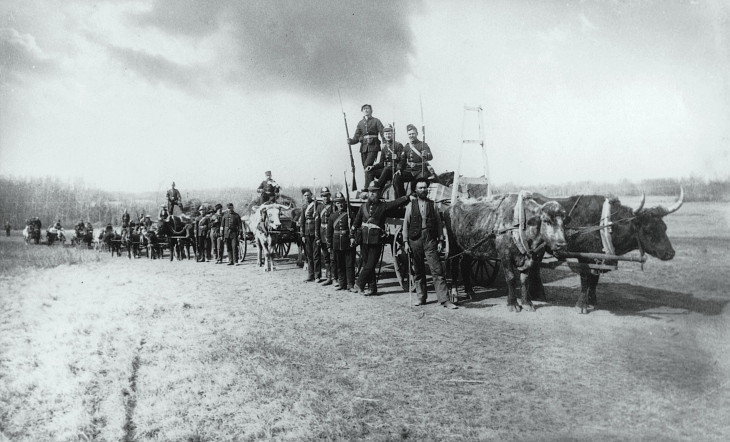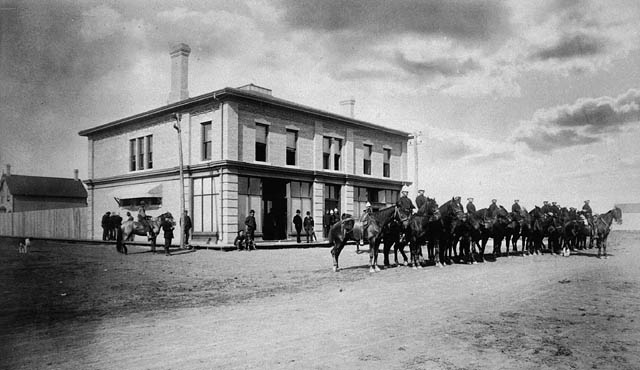|
Mission Ridge Winter Park
Mission Ridge Winter Park is a ski resort in Saskatchewan. It has a vertical drop of . It is located in the Qu'Appelle Valley near Mission Lake and the town of Fort Qu'Appelle. See also *List of ski areas and resorts in Canada This is a list of ski areas and resorts in Canada. Alberta * WinSport's Canada Olympic Park (1988 Winter Olympics sliding and jumping events) *Canmore Nordic Centre (1988 Winter Olympics Nordic and biathlon events) * Canyon Ski Area - Red Deer ... References North Qu'Appelle No. 187, Saskatchewan Ski areas and resorts in Saskatchewan Division No. 6, Saskatchewan {{ski-resort-stub ... [...More Info...] [...Related Items...] OR: [Wikipedia] [Google] [Baidu] |
Fort Qu'Appelle
Fort Qu'Appelle is a town in Canadian province of Saskatchewan located in the Qu'Appelle River valley north-east of Regina, between Echo and Mission Lakes of the Fishing Lakes. It is not to be confused with the once-significant nearby town of Qu'Appelle. It was originally established in 1864 as a Hudson's Bay Company trading post. Fort Qu'Appelle, with its 1,919 residents in 2006, is at the junction of Highway 35, Highway 10, Highway 22, Highway 56, and Highway 215. The 1897 Hudson's Bay Company store, 1911 Grand Trunk Pacific Railway station, Fort Qu'Appelle Sanatorium ( Fort San), and the Treaty 4 Governance Centre in the shape of a teepee are all landmarks of this community. Additionally, the Noel Pinay sculpture of a man praying commemorates a burial ground, is a life-sized statue in a park beside Segwun Avenue. Demographics In the 2021 Census of Population conducted by Statistics Canada, Fort Qu'Appelle had a population of living in of its total priva ... [...More Info...] [...Related Items...] OR: [Wikipedia] [Google] [Baidu] |
Saskatchewan
Saskatchewan ( ; ) is a province in western Canada, bordered on the west by Alberta, on the north by the Northwest Territories, on the east by Manitoba, to the northeast by Nunavut, and on the south by the U.S. states of Montana and North Dakota. Saskatchewan and Alberta are the only landlocked provinces of Canada. In 2022, Saskatchewan's population was estimated at 1,205,119. Nearly 10% of Saskatchewan’s total area of is fresh water, mostly rivers, reservoirs and lakes. Residents primarily live in the southern prairie half of the province, while the northern half is mostly forested and sparsely populated. Roughly half live in the province's largest city Saskatoon or the provincial capital Regina. Other notable cities include Prince Albert, Moose Jaw, Yorkton, Swift Current, North Battleford, Melfort, and the border city Lloydminster. English is the primary language of the province, with 82.4% of Saskatchewanians speaking English as their first language. Saska ... [...More Info...] [...Related Items...] OR: [Wikipedia] [Google] [Baidu] |
Regina, Saskatchewan
Regina () is the capital city of the Canadian province of Saskatchewan. The city is the second-largest in the province, after Saskatoon, and is a commercial centre for southern Saskatchewan. As of the 2021 census, Regina had a city population of 226,404, and a Metropolitan Area population of 249,217. It is governed by Regina City Council. The city is surrounded by the Rural Municipality of Sherwood No. 159. Regina was previously the seat of government of the North-West Territories, of which the current provinces of Saskatchewan and Alberta originally formed part, and of the District of Assiniboia. The site was previously called Wascana ("Buffalo Bones" in Cree), but was renamed to Regina (Latin for "Queen") in 1882 in honour of Queen Victoria. This decision was made by Queen Victoria's daughter Princess Louise, who was the wife of the Governor General of Canada, the Marquess of Lorne. Unlike other planned cities in the Canadian West, on its treeless flat plain Regina h ... [...More Info...] [...Related Items...] OR: [Wikipedia] [Google] [Baidu] |
Ski Trail Rating Symbol-green Circle
A ski is a narrow strip of semi-rigid material worn underfoot to glide over snow. Substantially longer than wide and characteristically employed in pairs, skis are attached to ski boots with ski bindings, with either a free, lockable, or partially secured heel. For climbing slopes, ski skins (originally made of seal fur, but now made of synthetic materials) can be attached at the base of the ski. Originally intended as an aid to travel over snow, they are now mainly used recreationally in the sport of skiing. Etymology and usage The word ''ski'' comes from the Old Norse word which means "cleft wood", "stick of wood" or "ski". In Old Norse common phrases describing skiing were ''fara á skíðum'' (to travel, move fast on skis), ''renna'' (to move swiftly) and ''skríða á skíðum'' (to stride on skis). In modern Norwegian the word ''ski'' has largely retained the Old Norse meaning in words for split firewood, wood building materials (such as bargeboards) and roundpole fence ... [...More Info...] [...Related Items...] OR: [Wikipedia] [Google] [Baidu] |
Ski Resort
A ski resort is a resort developed for skiing, snowboarding, and other winter sports. In Europe, most ski resorts are towns or villages in or adjacent to a ski area – a mountainous area with pistes (ski trails) and a ski lift system. In North America, it is more common for ski areas to exist well away from towns, so ski resorts usually are destination resorts, often purpose-built and self-contained, where skiing is the main activity. Ski resort Ski resorts are located on both Northern and Southern Hemispheres on all continents except Antarctica. They typically are located on mountains, as they require a large slope. They also need to receive sufficient snow (at least in combination with artificial snowmaking, unless the resort uses dry ski slopes). High concentrations of ski resorts are located in the Alps, Scandinavia, western and eastern North America, and Japan. There are also ski resorts in the Andes, scattered across central Asia, and in Australia and New Zea ... [...More Info...] [...Related Items...] OR: [Wikipedia] [Google] [Baidu] |
Qu'Appelle Valley
The Qu'Appelle River is a river in the Canadian provinces of Saskatchewan and Manitoba that flows east from Lake Diefenbaker in south-western Saskatchewan to join the Assiniboine River in Manitoba, just south of Lake of the Prairies, near the village of St. Lazare. It is located in a region called the Prairie Pothole Region of North America, which extends throughout three Canadian provinces and five U.S. states. It is also within Palliser's Triangle and the Great Plains ecoregion. With the construction of the Qu'Appelle River Dam and Gardiner Dam upstream, water flow was significantly increased and regulated. Most of the Qu'Appelle's present flow is actually water diverted from the South Saskatchewan River. Upper and lower watersheds According to the Saskatchewan Water Security Agency, the Qu'Appelle Valley is made up of two watersheds with the dividing point being Craven Dam on the east side of Craven: Lower Qu'Appelle Watershed The Lower Qu'Appelle Valley is loca ... [...More Info...] [...Related Items...] OR: [Wikipedia] [Google] [Baidu] |
Mission Lake
Mission Lake, also known as ''Lebret Lake'', is a lake in the Canadian province of Saskatchewan. It is one of four lakes in the Qu'Appelle Valley known as the Fishing Lakes. Echo Lake is upstream and Katepwa Lake is downstream. The lake was named ''Mission'' after the Catholic mission at Lebret. Highways 22 35, and 56 provide access to the lake. Mission Lake, as well as the other three Fishing Lakes, are all in the deep-cut Qu'Appelle Valley, which was formed about 14,000 years ago during the last ice age. Meltwater from the glaciers carved out the valley and as water levels rose and fell, alluvium was left in the wake. These piles of alluvium are what created the separations between the lakes. The Qu'Appelle River is both the primary inflow and out flow. The river enters the lake at the west end, near the town of Fort Qu'Appelle, and exits the lake at the south-east end. Echo Creek is a small creek that rises to the south-west near McLean and enters the lake at the sou ... [...More Info...] [...Related Items...] OR: [Wikipedia] [Google] [Baidu] |
List Of Ski Areas And Resorts In Canada
This is a list of ski areas and resorts in Canada. Alberta * WinSport's Canada Olympic Park (1988 Winter Olympics sliding and jumping events) *Canmore Nordic Centre (1988 Winter Olympics Nordic and biathlon events) *Canyon Ski Area - Red Deer * Castle Mountain Resort - Pincher Creek *Drumheller Valley Ski Club * Eastlink Park - Whitecourt, Alberta * Edmonton Ski Club *Fairview Ski Hill - Fairview * Fortress Mountain Resort - Kananaskis Country, Alberta between Calgary and Banff * Hidden Valley Ski Area - near Medicine Hat, located in the Cypress Hills Interprovincial Park in south-eastern Alberta * Innisfail Ski Hill - in Innisfail * Kinosoo Ridge Ski Resort - Cold Lake * Lake Louise Mountain Resort - Lake Louise in Banff National Park * Little Smokey Ski Area - Falher, Alberta * Marmot Basin - Jasper *Misery Mountain, Alberta - Peace River * Mount Norquay ski resort - Banff * Nakiska (1988 Winter Olympics) * Nitehawk Ski Area - Grande Prairie *Pass Powderkeg - ... [...More Info...] [...Related Items...] OR: [Wikipedia] [Google] [Baidu] |
North Qu'Appelle No
North is one of the four compass points or cardinal directions. It is the opposite of south and is perpendicular to east and west. ''North'' is a noun, adjective, or adverb indicating direction or geography. Etymology The word ''north'' is related to the Old High German ''nord'', both descending from the Proto-Indo-European unit *''ner-'', meaning "left; below" as north is to left when facing the rising sun. Similarly, the other cardinal directions are also related to the sun's position. The Latin word ''borealis'' comes from the Greek '' boreas'' "north wind, north", which, according to Ovid, was personified as the wind-god Boreas, the father of Calais and Zetes. ''Septentrionalis'' is from ''septentriones'', "the seven plow oxen", a name of ''Ursa Major''. The Greek ἀρκτικός (''arktikós'') is named for the same constellation, and is the source of the English word ''Arctic''. Other languages have other derivations. For example, in Lezgian, ''kefer'' can mean bo ... [...More Info...] [...Related Items...] OR: [Wikipedia] [Google] [Baidu] |






